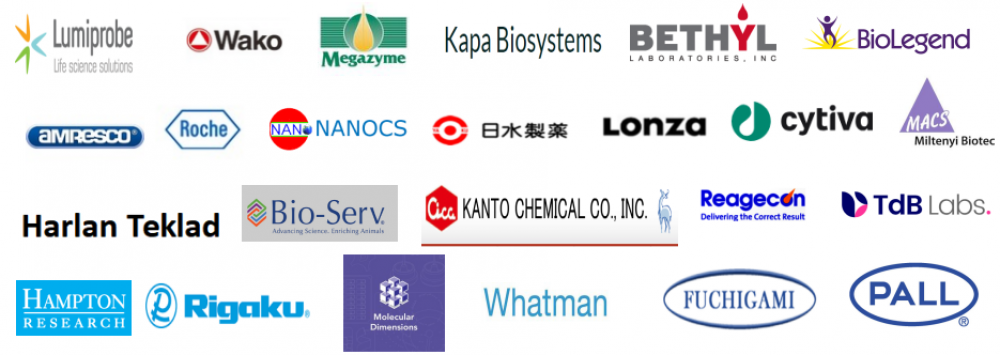Oxoid CM1007B 沙门氏菌显色琼脂基础 SALMONELLA CHROMOGENIC AGAR
SALMONELLA CHROMOGENIC AGAR BASE
CODE: CM1007
Salmonella Chromogenic Medium is a selective and differential agar base the identification of Salmonella species from other organisms in the family Enterobacteriaceae.
沙门氏菌显色培养基是一种选择性和差异化的琼脂培养基,用于从肠杆菌科的其他生物中鉴定沙门氏菌物种。
| Typical Formula* |
gm/litre |
| Special Peptone |
10.0 |
| Chromogenic mix |
28.0 |
| Agar |
12.0 |
| pH 7.2 ± 0.2 @ 25°C |
* Adjusted as required to meet performance standards
SALMONELLA SELECTIVE SUPPLEMENT
Code: SR0194
| Vial contents (each vial is sufficient for 500ml of medium) |
per vial
|
per litre
|
| Cefsulodin |
6.0mg |
12.0mg |
| Novobiocin |
2.5mg |
5.0mg |
Directions
Suspend 25g in 500ml of distilled water and add the contents of one vial of Salmonella Selective Supplement (SR0194) reconstituted as directed. Mix well and bring to the boil with frequent agitation. DO NOT AUTOCLAVE. DO NOT HOLD AT BOILING TEMPERATURE. Cool to 50°C, mix well and pour into sterile Petri dishes.
Description
Salmonella Chromogenic Medium is designed to identify Salmonella species based on their utilisation of one chromogenic substrate. Their inability to utilise another chromogenic substrate, that most other members of the family Enterobacteriaceae can utilise, enables rapid and reliable identification of Salmonella species.
There are in excess of 2000 known species of Salmonella, some of which differ from the typical rod-shaped, Gram-negative motile bacterium. In the U.S. alone there are between 800,000 and 4 million reported cases of salmonellosis per year resulting in 500 deaths. Infections due to Salmonella are of particular concern in the very young, the elderly and in the severely immunosuppressed where salmonellosis is recognised as an AIDS defining condition. Incidence continues to rise and infections due to Salmonella remain a principal health issue1. The widespread occurrence means there is a need for the rapid detection and identification of Salmonella in food and water to aid in the prevention and control of outbreaks2.
Traditionally, media used to differentiate Salmonella species from other members of the family Enterobacteriaceae depend upon the ability of Salmonella species to produce hydrogen sulphide coupled with their inability to ferment lactose2,3. These are, however, essentially inadequate methods, with a significant number of the 2000 plus species not exhibiting these characteristics. In recent times chromogenic media have been developed for the rapid and more reliable identification of Salmonella.
Salmonella Chromogenic Agar Base combines two chromogens for the detection of Salmonella sp., 5-Bromo-6-Chloro-3-Indolyl caprylate (Magenta-caprylate) and 5-Bromo-4-Chloro-3-Indolyl b-D galactopyranoside (X-gal). X-gal is a substrate for the enzyme b-D-galactosidase. Hydrolysis of the chromogen, Mag-caprylate, by lactose negative Salmonella species results in magenta colonies.
The medium contains bile salts to inhibit the growth of Gram-positive organisms and the addition of the Salmonella Selective Supplement SR0194 is recommended to increase the selectivity of the medium. This uses novobiocin to inhibit Proteus growth and cefsulodin to inhibit growth of Pseudomonads.
Technique
Inoculate the plates with a food or clinical sample to produce single colonies. A Salmonella enrichment broth may be used prior to streaking out, e.g. Rappaport-Vassiliadis Enrichment Broth CM0669, Selenite Broth CM0395 & LP0121 or Tetrathionate Broth Base CM0029. Incubate for 18-24 hours at 37°C. Examine the plates for coloured colonies.
On Salmonella Chromogenic Medium CM1007 & SR0194, typical colonies will be coloured as follows:
| Species |
Colony Colour |
Colony Diameter |
Colony Morphology |
| Salmonella spp. |
Magenta |
1.0mm |
Raised, smooth |
| Salmonella typhi |
Magenta |
1.0mm |
Raised, smooth |
| Salmonella paratyphi |
Magenta |
1.0mm |
Raised, smooth |
| Salmonella arizonae |
Magenta / blue † |
1.5mm |
Raised, smooth |
| Salmonella gallinarum |
Magenta |
0.75mm |
Raised, smooth |
| Salmonella indiana |
Blue † |
1.0mm |
Raised, smooth |
| Escherichia coli |
Blue |
1.0mm |
Raised, smooth |
| Enterobacter spp. |
Blue |
1.5mm |
Raised, smooth |
| Klebsiella spp. |
Blue |
3.0mm |
Raised, mucoid |
| Citrobacter spp. |
Blue |
1.5mm |
Raised, mucoid |
| Proteus spp. |
No growth / straw |
0.25mm |
– |
| Pseudomonas spp. |
No growth |
– |
– |
| Shigella sonnei |
Blue |
4.0mm |
Undulate |
| Shigella dysenteriae |
Magenta |
1.0mm |
Raised |
† Colour of colonies is a presumptive identification as it is dependent on enzyme activity. Some strains of Salmonella arizonae and Salmonella indiana can appear as blue colonies. In addition, some Shigella spp. can appear as magenta colonies. Further confirmatory tests are required.
Storage conditions and Shelf Life
Store the dehydrated medium at 10-30°C and use before the expiry date on the label.
Salmonella Selective Supplement should be stored at 2-8°C.
Store the prepared medium for up to 6 weeks at 2-8°C.
Appearance
Dehydrated medium: Straw coloured, free flowing powder
Prepared medium: White coloured gel
Quality control
| Positive controls: | Expected results |
| Salmonella enteritidis ATCC® 13076 * | Good growth, purple colonies |
| Salmonella poona NCTC 4840 * | Good growth, purple colonies |
| Negative controls: | |
| Escherichia coli ATCC® 25922 * | Growth, blue colonies |
| Pseudomonas aeruginosa ATCC® 27853 * | Inhibited |
* This organism is available as a Culti-Loop®
References
1. Gaillot, O. et al. (1999) J. Clin. Microbiol. 37: 762-765.
2. Rambach, A. (1990) Appl. Environ. Microbiol. 56: 301-303.
3. Gruenewald, R. (1991) J. Clin. Microbiol. 29: 2354-2356.
